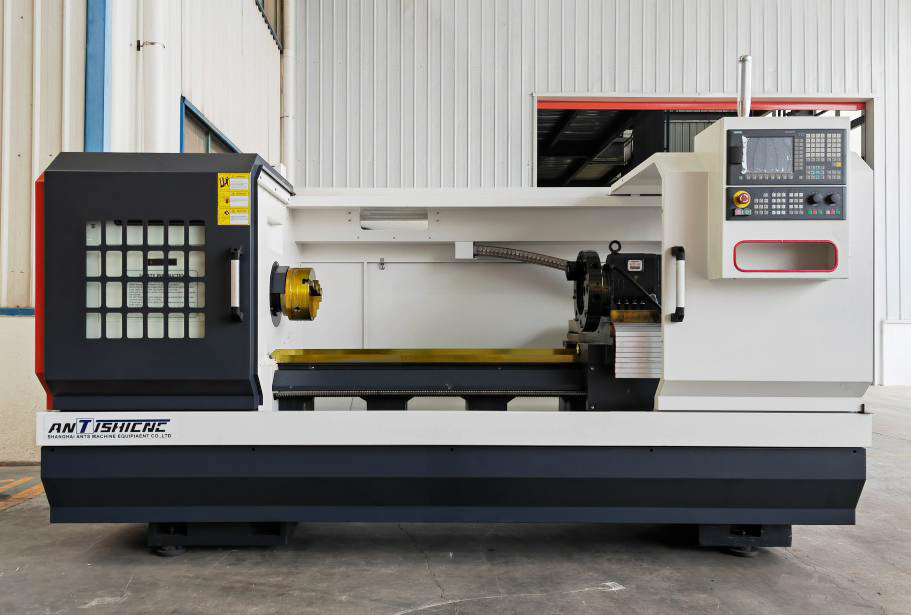
The vibration of the precision CNC lathe during the machining process will cause chatter marks on the surface of the workpiece, high rework rate, high rejection rate, and vibration knife hitting.
1. The vibration of precision CNC lathes is generally divided into three types: free vibration, forced vibration and self-excited vibration.
Free vibration
Free vibration is a kind of vibration caused by an initial excitation (usually a pulse) of an object. This kind of vibration relies on the initial excitation to obtain vibration energy at one time, with a limited history, and generally does not cause damage to the CNC lathe. Therefore, the influence of free vibration on CNC lathes is generally not considered.
Forced vibration
The vibration of an object under the action of external force that continuously changes periodically is called forced vibration, such as the vibration caused by imbalance and misalignment.
Self-excited vibration
Self-excited vibration is the vibration caused by the excitation generated by the system itself without external force. Self-excited vibration is a kind of relatively dangerous vibration. Once the equipment has self-excited vibration, it will lose the stability of equipment operation.
2. Causes and solutions of forced vibration of precision CNC lathes
Main reason
(1) Centrifugal force generated by the eccentric mass of rotating parts;
(2) Transmission parts error during the movement transmission process;
(3) Clearance characteristics during cutting.
Solution
(1) Reduce the excitation force. If the rotating parts are accurately balanced, the motor rotor, pulley and chuck are subjected to static balance tests to improve assembly accuracy.
(2) Improve the rigidity and damping of the process system. Increased stiffness and damping of the lathe system can improve resistance to vibration and reduce vibration.
(3) Adjust the natural frequency of the system to avoid resonance. When selecting the speed, keep the frequency of the rotating workpiece as far away as possible from the natural frequency of the original machine tool and avoid the resonance zone.
(4) Use shock absorber or damper. When the above methods are ineffective, consider using dampers or shock absorbers.
3. Causes and solutions for self-excited vibration of precision CNC lathes
Cause
In the machining process, self-excited vibration is caused by the vibration process itself to cause a periodic change in the cutting force, and the periodically changing cutting force, in turn, strengthens and maintains the vibration. The vibration system supplements the consumption by the damping effect. energy of. When the vibration motion stops, the alternating force disappears. This kind of self-excited vibration in the metal cutting process is generally called cutting chatter.
especially pointed out that the probability of self-excited vibration is much higher than that of forced vibration. The relative vibration of cutting will reduce the surface quality of the workpiece and affect the service life of the tool and even the machine tool. Especially now that the large-scale use of high-precision CNC lathes, the high precision of the workpieces guaranteed by the CNC lathes, etc., will become meaningless when chattering occurs.
Solution
(1) Choose a proper center height when installing the tool. When turning the inner hole groove, the tool tip point is theoretically required to be consistent with the center line of the hole, but in fact, the tool tip point is often about 0.1 mm above the center line when the tool is installed. This is mainly due to the tool tip point when the tool is cutting. Because it tends to deviate due to the reaction, it is necessary to give it a compensation amount.
(2) Shorten the overhang of the tool bar as much as possible to improve the rigidity of the tool. When the tool bar is stressed, it will bend and cause vibration, and the longer the overhang, the greater the vibration. Under normal circumstances, the extended length of the tool should not exceed 2-3 times the length of the tool shank, which can greatly improve the bending strength of the slender tool shank.
(3) Reasonably select the geometric parameters of the tool. The geometric parameters of the tool mainly include: the rake angle, the entering angle, and the relief angle of the tool. The rake angle has a great influence on the vibration. As the rake angle increases, the vibration amplitude will also decrease. But when the cutting speed is high, the influence of the rake angle on the vibration will be weakened. Therefore, during high-speed cutting, even if a tool with a negative rake angle is used, strong vibration will not be generated. If the entering angle increases, the cutting force will decrease and the cutting width will also decrease. As the entering angle increases, the vibration amplitude gradually decreases, but when the angle is greater than 90°, the vibration amplitude increases again. For the selection of the relief angle, it can be reduced to 2°~3°, and the vibration will be significantly weakened at this time. It is also possible to grind a negative chamfer angle on the main rear corner of the tool, which can play a good role in damping vibration.
(4) Improve the vibration resistance of the workpiece system. Improving the vibration resistance of the process system is one of the important measures to control and prevent self-excited vibration. In the process system, the workpiece system is often the weak link that is prone to vibration, so it is very necessary to improve the vibration resistance of the workpiece system.


